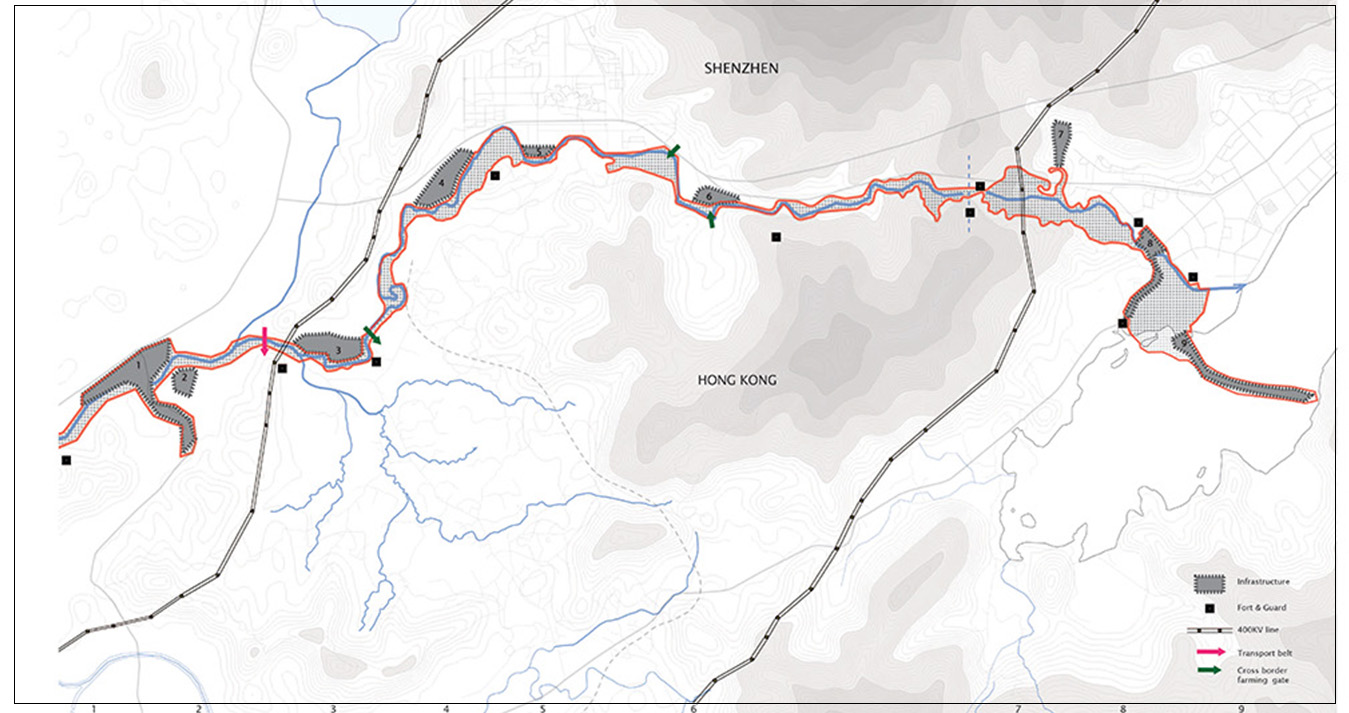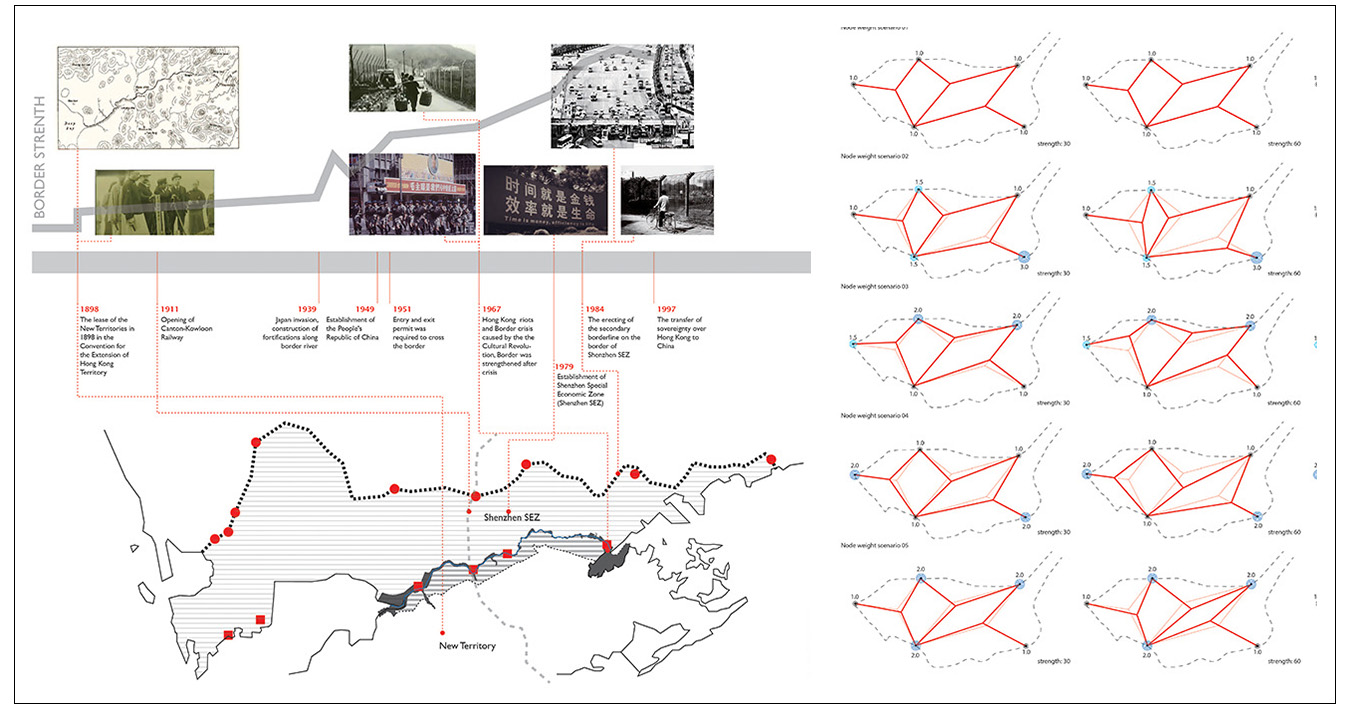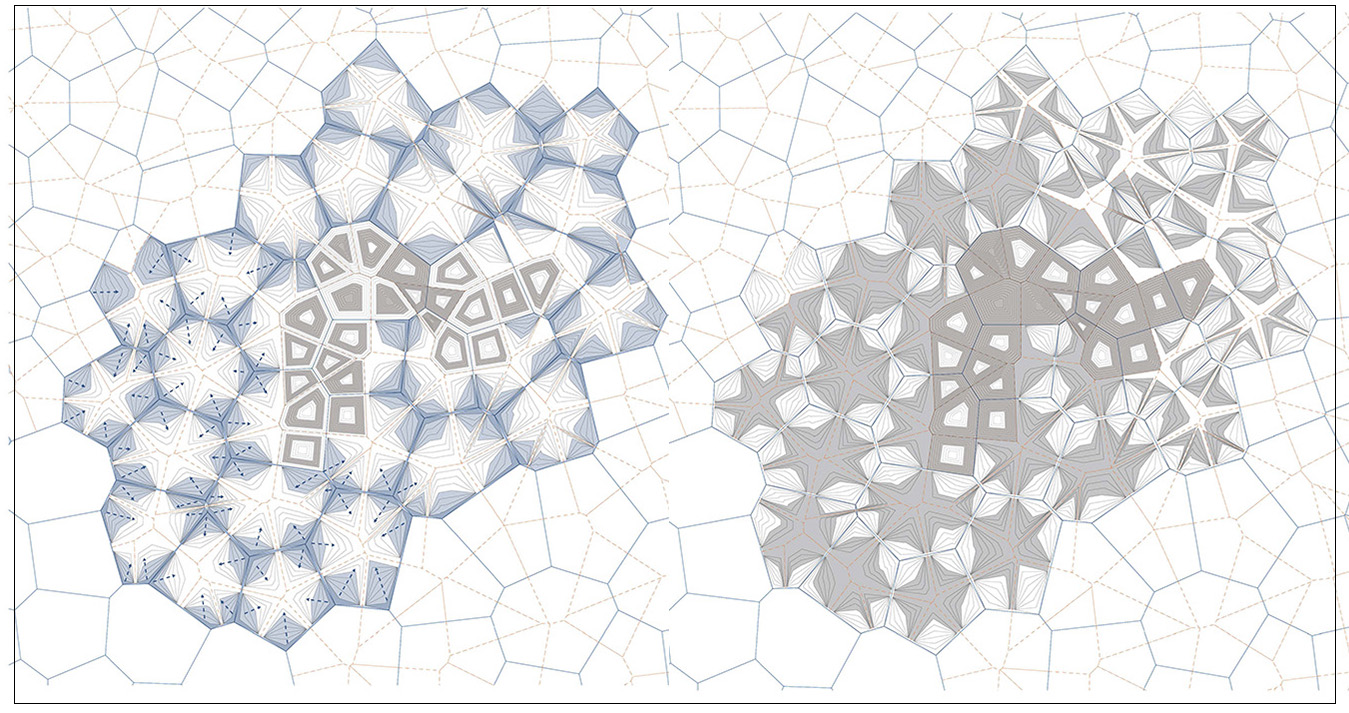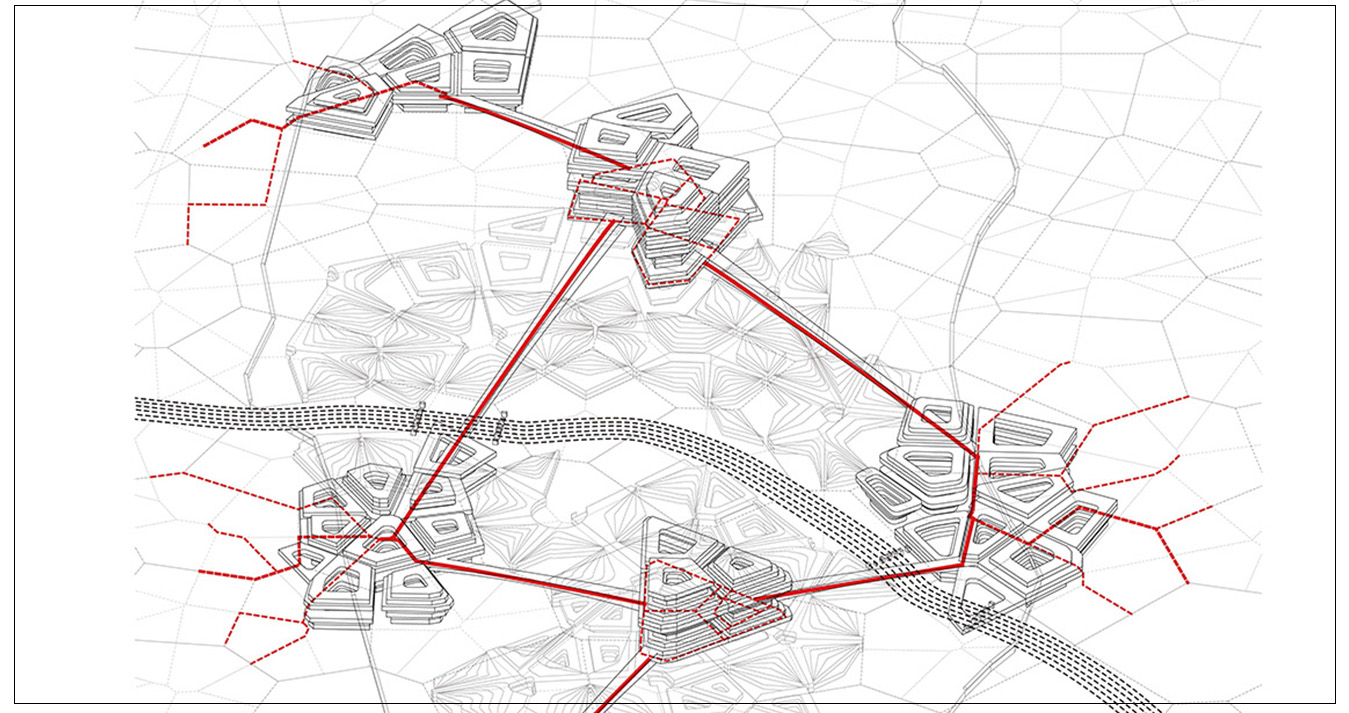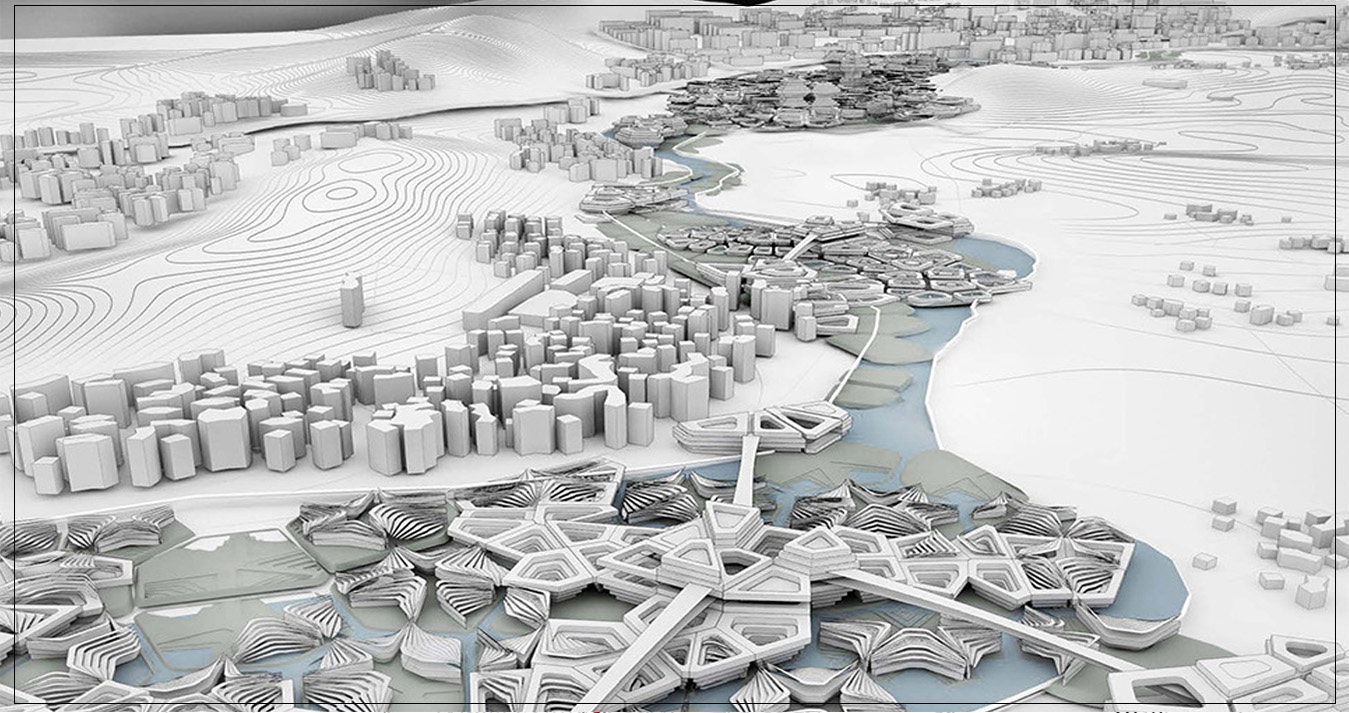Border Control Belt
The existing frontier between Shenzhen and Hong Kong, which is known as the Closed Area, was established in 1951 to pro-vide a buffer zone to prevent illegal immigration and cross-boundary crimes.
In 1997, Hong Kong was returned to China and the collabora-tionsbetween Shenzhen and Hong Kong has grown rapidly. The trend for integration is also addressed by increasing traf-fic amount. The fact that 600,000 commuters cross the border daily shows the strong interaction between SZ and HK. How-ever, the area around border remains two clearly separated regions. The different geographical conditions and develop-mentpolicies create huge differences in urbanization process. The territory in SZ was developed in a modern city while there were only rural villages in the part of HK.
Even though the territory is divided by the border, we can still find the interdependency in many levels. Geographically, the water system is sharing by two regions. A city could be easily influenced by another. For example, the polluted water gen-eratedby the suburban area in SZ could easily damage the organic agriculture area in HK village.
The territory is in one way separated by the fence and the bor-der river and another way connected by various cross-border infrastructures. We are interested in the idea of revealing the relationship between division and connection by infrastruc-turefacilities.
- [year] 2013
- [] Berlage Institute
- [Credits] Han Lin, Haw Wei Liou, Enriqueta Llabres, Eduardo Rico
Border Control Belt
The existing frontier between Shenzhen and Hong Kong, which is known as the Closed Area, was established in 1951 to pro-vide a buffer zone to prevent illegal immigration and cross-boundary crimes.
In 1997, Hong Kong was returned to China and the collabora-tionsbetween Shenzhen and Hong Kong has grown rapidly. The trend for integration is also addressed by increasing traf-fic amount. The fact that 600,000 commuters cross the border daily shows the strong interaction between SZ and HK. How-ever, the area around border remains two clearly separated regions. The different geographical conditions and develop-mentpolicies create huge differences in urbanization process. The territory in SZ was developed in a modern city while there were only rural villages in the part of HK.
Even though the territory is divided by the border, we can still find the interdependency in many levels. Geographically, the water system is sharing by two regions. A city could be easily influenced by another. For example, the polluted water gen-eratedby the suburban area in SZ could easily damage the organic agriculture area in HK village.
The territory is in one way separated by the fence and the bor-der river and another way connected by various cross-border infrastructures. We are interested in the idea of revealing the relationship between division and connection by infrastruc-turefacilities.





